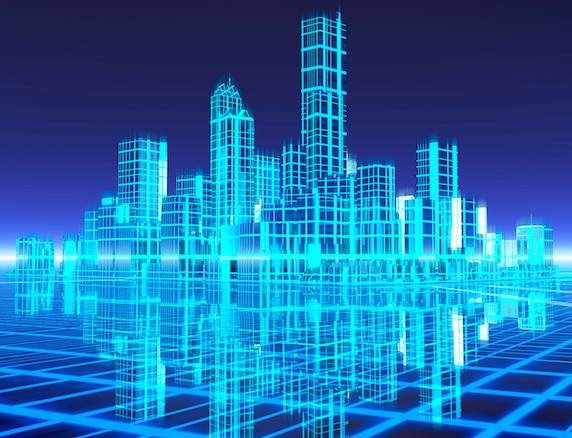 Everyone is interested in lowering their costs. Monitoring power and energy consumption offers a way to accomplish that goal in a large commercial space.
Everyone is interested in lowering their costs. Monitoring power and energy consumption offers a way to accomplish that goal in a large commercial space.
Typical commercial facilities contain common areas, such as lobbies, hallways, elevators, and mechanical/electrical spaces. The interior is also occupied by tenants with various power needs. A building owner, a facility manager, and a commercial tenant have widely diverging interests, and they all view power monitoring differently.
One way to serve all of their needs is create a “smart building.” Meters and other devices installed throughout the space can be networked together and linked to a central building control and data storage system. Tenants can look at the data for their own spaces while building owners and facility managers can look at the whole facility. In this way, everyone can make more informed decisions about energy use.
The Tenant: Energy Consumption
The first piece of information to look at in any energy management strategy is the energy consumed by the facility. Power meters installed at electrical panels measure the kW and kWh values for every part of the building, which is the chief area of concern for building tenants.
To lower the energy bill for a space within the facility, the tenant can examine the power used at different times of day and shift loads to non-peak times. Tenants can also lower their bills by controlling factors such as plug load and lighting usage.
The Owner: Cost Allocation
A factor of concern for the building owner is cost allocation. Energy consumption throughout a large space is never uniform. Some areas, like storage areas or warehouses, use little energy per square foot; offices and retail spaces use larger amounts.
Manufacturing areas and data center rooms generally consume the most energy per square foot in any commercial space. Power use in different areas of a building are accurately calculated via branch level metering. By measuring energy consumption in each tenant’s branch, the building owner can accurately divide up the total power.
The Facility Manager
The facility manager has a complex job, as he or she is most interested in the smooth running of all spaces in the building. The manager wants uninterrupted power that meets the needs of the various tenants. The manager also wants to anticipate and prepare for the building’s future needs. A smart building provides a wealth of data that can be used to accomplish these tasks.
- Infrastructure Maintenance and Improvements. Accurate metering pinpoints areas or equipment in need of upgrades or repairs. Monthly energy consumption is compared to baseline consumption data. A sudden spike in a heating bill, for example, can indicate a faulty thermostat or a leak in the building envelope. An increase in the power drawn by a motor is a sign of wear, and can help to predict equipment failures. Lighting loads can be reduced by upgrading hardware, and data center energy efficiency can be increased by monitoring and optimizing the cooling units used in server rooms.
- Power Factor. Power factor is a variable used to judge power quality. A circuit with a low power factor draws more current to move a given amount of power than a circuit with a high power factor, resulting in a loss of useful energy. Because of this waste, utility companies often charge more for power drawn by circuits with a low power factor. Equipment with inductive loads, such as electric motors, lamp ballasts, and transformers, often have low power factors. A meter capable of quantifying the power factor pinpoints these circuits, offering a great upgrade opportunity.
- Critical Power. In many applications, power quality is less of a concern than the need for a constant, reliable power supply. These applications include data centers, hospitals, financial institutions, e-commerce businesses, large-scale manufacturing centers, public safety agencies, and scientific research facilities. In any of these services, a few seconds of downtime causes huge financial loss and real, physical risks to human life and health. Networked multi-circuit monitors continually watch incoming voltage from the power grid, generating immediate alarms if the voltage drops. This alarm allows facility administrators to compensate by quickly switching to some form of backup power. In a fully automated building, this switch happens even faster by programming critical thresholds into the building control system.
Smart Building = Smart Choice
In a smart building, power metering and networking devices work together to generate a complete, real-time picture of a building’s energy consumption patterns. Every party benefits from the availability of this data. Tenants look at real-time energy consumption for their space. Building owners can easily allocate building costs to all tenants. Facility managers look at energy, power, and power factor data to better anticipate the needs of the building. This holistic approach will help reduce costs and increase efficiency in a high-rise.
Sarah Romero
Sarah Romero is a technical writer for Veris Industries.

